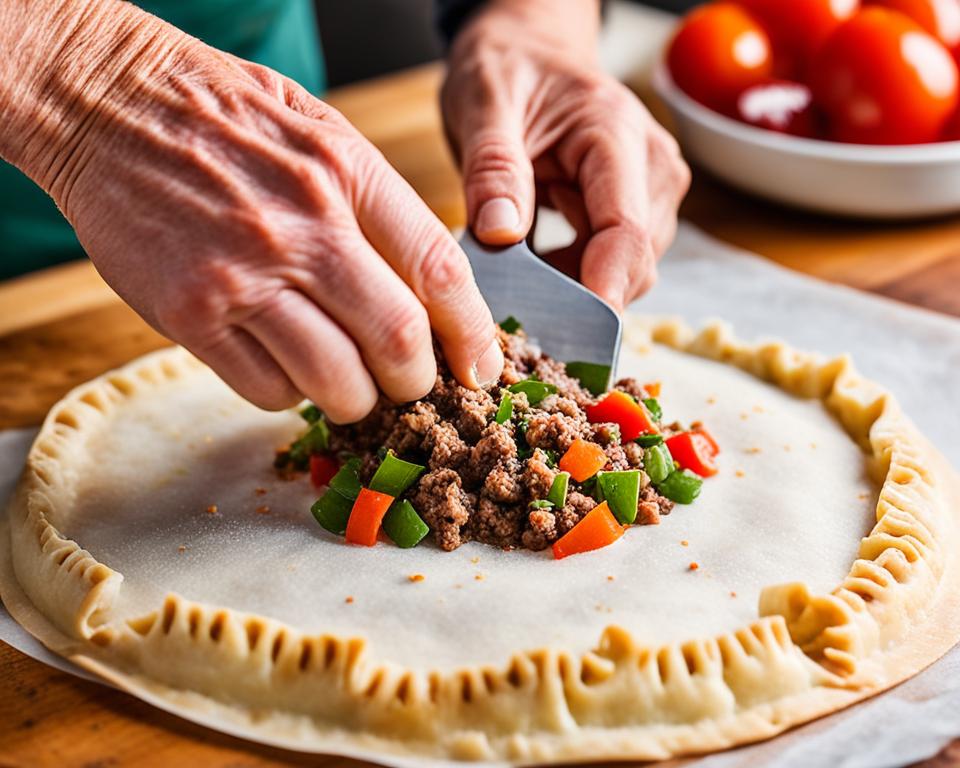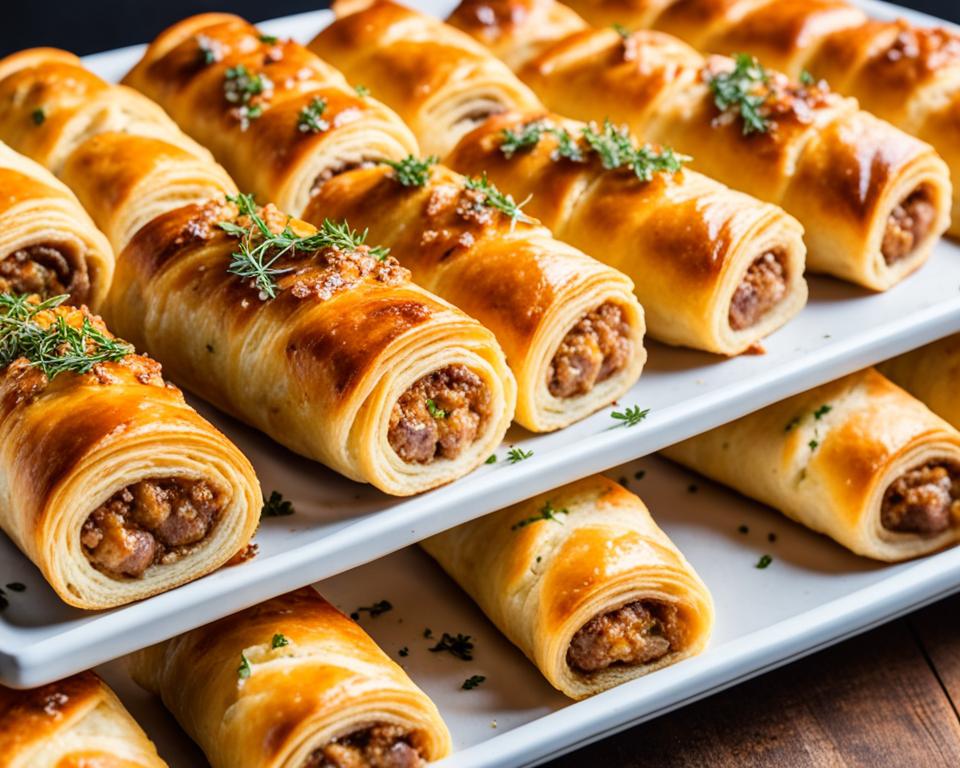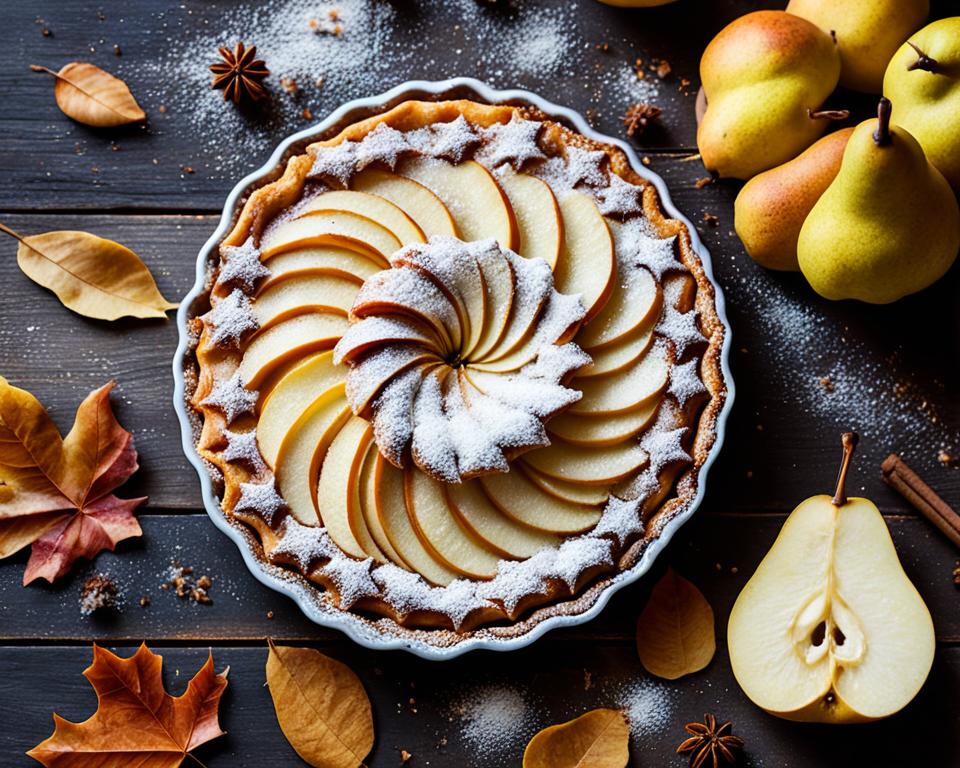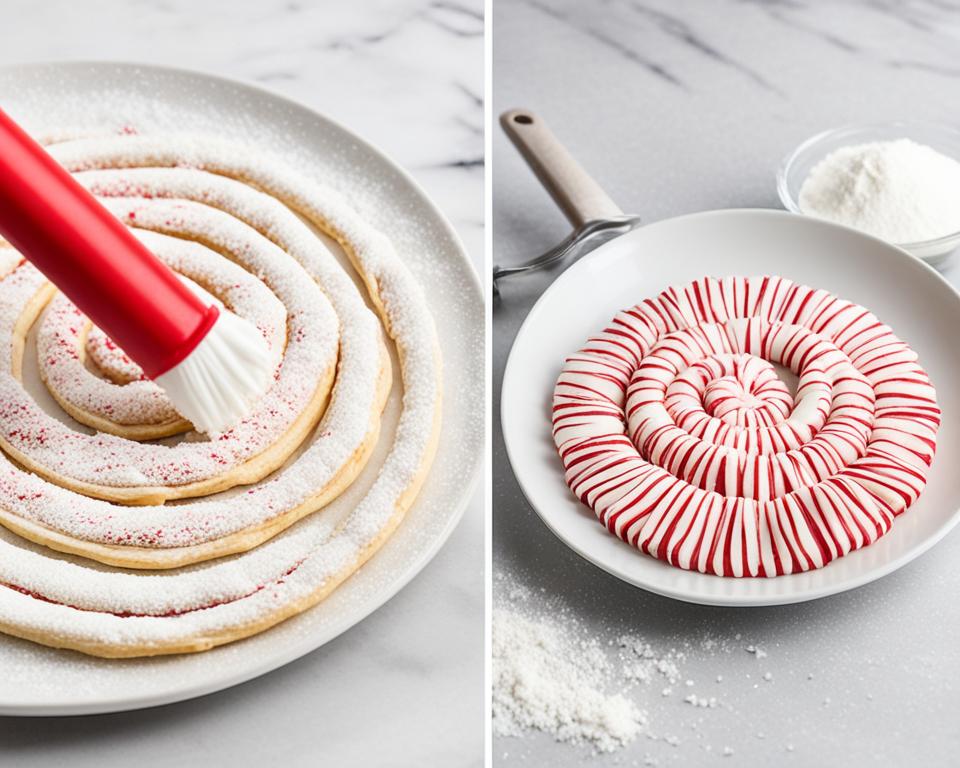For those in pursuit of comfort food perfection, there’s nothing quite like a homemade Flaky Meat Pasty to satisfy your cravings. These savory delights encapsulate a delicious hand pie experience, promising to enchant your tastebuds with their buttery crust and hearty filling. Pair that with a quick homemade gravy, and you’ve got a match made in culinary heaven. Crafting your own pasties may seem daunting, but with a little guidance and the right ingredients, whipping up these golden parcels of joy is simpler than one might think. And the reward? A flaky, warm, and utterly satisfying meal that beckons to be shared… or savored solo.
Whether you’re a seasoned pie aficionado or a newcomer to the pasty-making game, this recipe is designed to take the mystery out of pastry perfection. The result? A homemade pastry masterpiece that’s both flavorful and feasible to create. No matter the occasion, these Flaky Meat Pasties are sure to impress, providing a mouthwatering centerpiece for any dining table.
Key Takeaways
- Embrace the art of homemade pastry for an exceptional Flaky Meat Pasty.
- Quick homemade gravy is the heart of the dish, elevating the pasty to new heights of flavor.
- Accessible to bakers of all levels, ensuring delicious hand pies every time.
- The combination of flaky crust and savory filling creates an irresistible comfort food experience.
- Follow a simple process for pasty perfection, a testament to the joy of homemade cooking.
- Ideal for any meal, these pasties are versatile and can be adapted to taste preferences.
Introduction to Flaky Meat Pasties
Delve into the world of homemade savory pies, and you’ll find a dish that resonates with the heart of culinary tradition—the flaky crust meat pasty. Renowned for its rich, meat-filled pastry core and hallmark golden flaky crust, this classic meat pie encapsulates the essence of comfort food. A favorite in many cultures, the flaky meat pasty invites you to embark on a homemade journey that celebrates the time-honored craft of pie making.
Crafted with care, every pasty tells a story of flavors, textures, and the warmth of a kitchen filled with the aroma of baking. Whether this is your maiden voyage into the pasty realm or you are looking to refine your artisanal skills, this guide is poised to leave an indelible mark on your culinary repertoire. The allure of the buttery pastry and the savory filling is irresistible—a testament to the timeless appeal of the classic meat pie.
Beyond the mere act of eating, the making of a flaky meat pasty is a foray into the art of baking itself. It stands as an invitation to blend patience with creativity, yielding a delicacy that pleases the eye as much as the palate. In this celebration of home cooking, the savory pie is not just food; it’s a comforting embrace, a slice of history, and an ode to the homemade craft. Let us usher you into the domain of flaky meat pasties, where each bite is as fulfilling as it is delicious.
- Experience the pleasure of a handcrafted savory pie.
- Master the creation of the quintessential flaky crust.
- Indulge in the rich and savory taste of a meat-filled pastry.
- Revel in the pride of baking a classic meat pie from scratch.
In this section, we’ve set the stage for what promises to be a delightful culinary adventure. We’ll guide you through the creation of a pasty that’s bound to become a treasured part of your recipe collection—a flaky, savory, and utterly satisfying dish with deep roots in the annals of comfort food. Join us as we craft this age-old delicacy with a touch of modern flair, ensuring a scrumptious result every time.
The Cultural History of Meat-Filled Pastries
The humble pasty is more than just a meal; it’s a culinary bridge connecting centuries and continents. Originating from the rugged shores of Cornwall, the traditional pasty carries with it a storied history, deeply woven into the fabric of food culture worldwide. From the 1100s, this robust savory pie has traveled across borders, morphing with regional tastes to maintain its status as an essential, portable, and delightful food staple.
In the pasty, we see not just a meat-filled pastry, but a token of endurance, a symbol of how food transcends boundaries. As Cornish miners sought work beyond England’s borders, they entrenched the pasty in global culinary traditions, leaving an indelible mark far from its Celtic origins. Today, the pasty’s reach is incontrovertible, savored by those appreciating a taste of history in their hearty, handheld meal.
From Cornwall to Global: The Spread of a Savory Classic
The journey of the traditional pasty from Cornwall’s coasts to international fame is as hearty as the pie itself. As miners from Cornwall migrated in search of new frontiers, the pasty clinched its place in the lunch pails of laborers around the world. This global movement transformed the pasty from a regional delicacy to a universal comfort food, with each culture infusing its distinct flavors and ingredients into the savory pie.
The pasty’s adaptability is its superpower; wherever it goes, it becomes part of the local landscape while preserving its Cornish essence. It serves as a reminder—a flaky, delicious reminder—of the pasty’s enduring allure and its role in the common, culinary heritage of humankind.
Pasties in American Culinary Tradition
In the United States, particularly in upstate Michigan, the pasty has earned its place in the heart of American cuisine. Here, these savory pies, known affectionately as Tiddy Oggies, straddle the line between novelty and nostalgia. American pasties retain the hand-held convenience of the traditional pasty while drawing on the bountiful local produce and meats to create a gastronomic tapestry that respects its origins and embraces the new world.
With every bite of these flaky, meat-filled pastries, diners are transported to Cornwall’s coastal mines, the American frontier, and back to their present tables—a true testament to the pasty’s capacity to tell the story of its people, their journeys, and the places they call home.
What Makes a Meat Pasty Flaky and Delightful
The essence of what makes a meat pasty truly irresistible lies in achieving the perfect flaky crust and buttery texture. It’s the harmonious marriage of a delicately layered crust with a rich and savory filling that constructs the traditional pasty experience. Let’s explore the artisanal approach to baking that transforms a good meat pasty into a homemade masterpiece.
Attaining a flaky texture starts with the selection of high-quality ingredients. Cold butter is paramount—its distribution throughout the dough ensures that when it hits a hot oven, it melts to create steam pockets and layers. This results in that characteristic flaky crust that gives a pasty its delightful crunch. Buttermilk, too, plays a critical role, introducing a slight tang and contributing to the tenderizing process, which affects the overall mouthfeel.
Homemade pastry is a canvas for creativity and craftsmanship. It allows for complete control over what goes into your pasty, enabling you to steer clear of preservatives and unwanted additives found in some store-bought crusts. The virtue of homemade lies in its freshness and the ability to infuse personal touches that elevate the traditional pasty, making each bite a reflection of home-baked love.
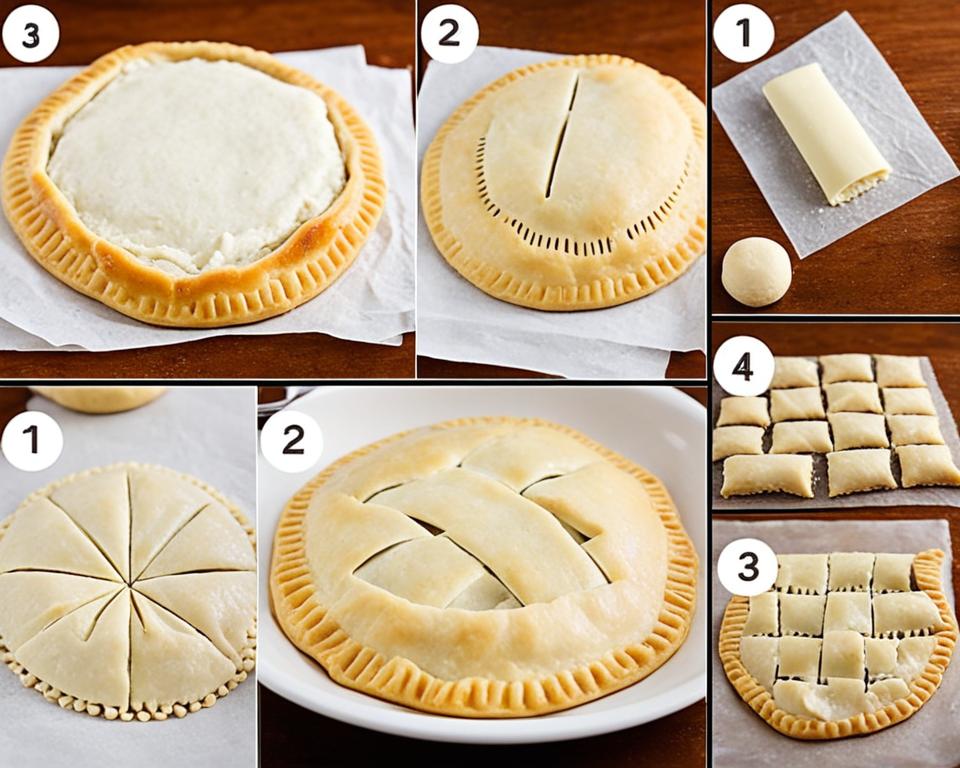
The technique of handling the dough is just as important as the ingredients. When crafting your pastry, minimize the handling to prevent the warmth of your hands from melting the butter. Quick, confident motions ensure the layers remain discrete, promising that buttery, flaky promise once it’s freshly baked.
Here’s a quick glance at the fundamental components that lead to that perfect pasty texture:
- **High-quality butter** – Ensures a decadent, buttery consistency.
- **Cold technique** – Incorporating cold fats prevents premature melting.
- **Proper liquid balance with buttermilk** – Offers a tender crumb and complex flavor profile.
- **Minimal dough handling** – Keeps the integrity of those flaky layers intact.
Therefore, the flaky delight of a pasty isn’t merely by chance—it’s the forethought and precision in preparation that peaks in the marriage of crust and filling that defines a homestyle, traditional pasty.
Selecting The Right Ingredients For Your Meat Pasty
Embarking on the journey to create the ultimate Flaky Meat Pasty, one must carefully consider the selection of high-quality ingredients. With an emphasis on texture and taste, the choices you make for the buttermilk pie crust and savory filling are pivotal. The ingredients not only interact to deliver culinary delight but also contribute individually to the unique character of a pasty.
The Perfect Flaky Crust: Choosing Your Fats
For those yearning for that irresistible, buttery, flaky crust, nothing is more important than the type of fat used. In the world of pasty making, the kind of butter you select and the incorporation of buttermilk are consequential. It’s the cubed butter, cold and firm, that layers within the dough, yielding pockets of air as it bakes and melts, ensuring the flakiness of every bite. The addition of buttermilk offers a subtle tang while tenderizing the dough, a secret to electricizing the palate. This fusion is the backbone of your delicious hand pie crust, an essential step towards pasty excellence.
For the Filling: Balancing Meat and Vegetables for Richness and Savoriness
The treasure of any Flaky Meat Pasty lies within its filling—a luscious, savory blend that harmonizes richness and herbaceousness. Centering around robustly flavored beef chuck, complemented by the earthy sweetness of carrots and the grounding comfort of potatoes, this medley becomes a statement of flavor. When thoughtfully seasoned with salt, aromatic rosemary, and oregano, the result is a savory filling, one that embodies the heart and soul of this classic pastry. Each component is carefully chosen to contribute towards the body of the savory filling, ensuring a result that’s as rich in tradition as it is in taste.
| Ingredient | Role in Pasty | Tips |
|---|---|---|
| Buttermilk | Tenderness and Flavor | Chill before using for best results. |
| Butter | Flakiness and Richness | Use unsalted and cube while cold. |
| Beef Chuck | Main Protein | Dice into small pieces for uniform cooking. |
| Carrots | Sweetness and Texture | Peel and dice for even baking. |
| Potatoes | Hearty Filler | Use a waxy variety for best results. |
| Seasonings | Depth of Flavor | Adjust according to preference. |
In the canvas of culinary arts, the greatness of a Flaky Meat Pasty is painted with the brush of premium ingredients and thoughtful preparation. Selecting the right components with meticulous regard shapes the narrative of this classic pie-making tradition. From achieving a flaky crust that shatters to the rich and comforting bite of the well-seasoned filling, each ingredient has a story to tell and a role to play in creating a delicious hand pie that’s truly unforgettable.
Step-by-Step Guide to Making Flaky Meat Pasties
Creating the quintessential homemade pastry that brings a touch of heartwarming tradition to the table starts with two key components: the crust and the filling. A tender yet robust buttermilk pie crust, paired with a savory filling rich in flavors, makes for the perfect traditional pasty experience. Let’s dive into the intricacies of crafting these delicious parcels step by step.
Preparing the Buttermilk Pie Crust
The journey to a flaky crust commences in the kitchen with the preparation of the buttermilk pie crust. To create this foundation for your homemade pastry, begin by placing your flour and cold, cubed butter into a food processor. A few short pulses are all it takes until you see a crumbly texture that barely holds together – a visual cue that you’re on the right track to achieving that desirable flake.
As you slowly add chilled buttermilk, continue to pulse just until the dough forms rough crumbs. Overworking the dough is the nemesis of the flaky crust, so restraint is essential. Once the right consistency is reached, divide the dough, shape it into disks, and allow it to chill, setting the stage for an excellent buttermilk pie crust that promises to elevate your pasty-making craft.
Cooking a Flavorful Meat-Filled Filling
While your dough rests, turn your attention to the heart of your pasty – the savory filling that will envelop the taste buds in comfort and richness. Start by browning cubes of beef chuck until they’re temptingly golden. Introduce a mirepoix of diced potatoes and carrots, layering in each element to build upon the filling’s complex flavor profile.
As spices like rosemary and oregano join the pan, the symphony of flavors begins to harmonize, requiring nothing more than a simmer to coax them toward perfection. This is where your homemade gravy – a simple but transformative concoction of the reserved cooking liquid, butter, and flour – comes into play, binding each ingredient with a savory intensity fit for a princely pie.
Patience is key; let the mixture cool slightly until it’s ready to be lovingly packed into the tender embrace of your buttermilk pie crust, sealing the deal on what’s bound to be a memorable homemade pasty.
With these steps, you’ve laid the groundwork for pasties that epitomize homemade excellence. The flaky buttermilk pie crust is primed for the oven, and the beef chuck filling simmered in homemade gravy promises a depth of flavor that only traditional pastries can boast. It’s this time-tested process that evolves simple ingredients into a feast that celebrates the very essence of a savory pie.
Secrets to Assembling the Perfect Pasty
Mastering the art of creating a homemade pastry is crucial to assembling the ideal traditional pasty. With the buttermilk pie crust ready and chilled, the journey to a flaky crust delight begins with rolling and shaping. The filling, a mixture rich with savory flavors, awaits its pastry envelope. Here, we’ll unveil the processes of rolling your dough with expertise and crimping the pasty edges for a pastry that’s not just delicious but structurally sound.
Rolling and Shaping Your Dough Like a Pro
The secret to a perfect pasty starts with the rollout. On a floured surface, use a rolling pin to exert gentle pressure on the dough, transforming it from a chilled disc into a smooth, even circle. The objective is to create a thin, malleable layer ready to be crowned with a hearty serving of the savory pie filling. Successful shaping is less about force and more about gentle, even strokes, maintaining the dough’s temperature to keep that flaky crust potential intact.
Crimping Edges and Creating a Proper Seal
Encasing the savory filling is an art form where crimping isn’t just a step – it’s a seal of authenticity. Brush the perimeter of your rolled-out dough with an egg wash, a glue to bolster the bond between folds. The filling topples onto one half, eagerly awaiting its pastry cover. As the dough folds over, it’s time for crimping; gentle yet decisive presses of a fork along the edges mold a scalloped boundary, a pastry hallmark that serves both practical and aesthetic purposes for your homemade pastry creation.
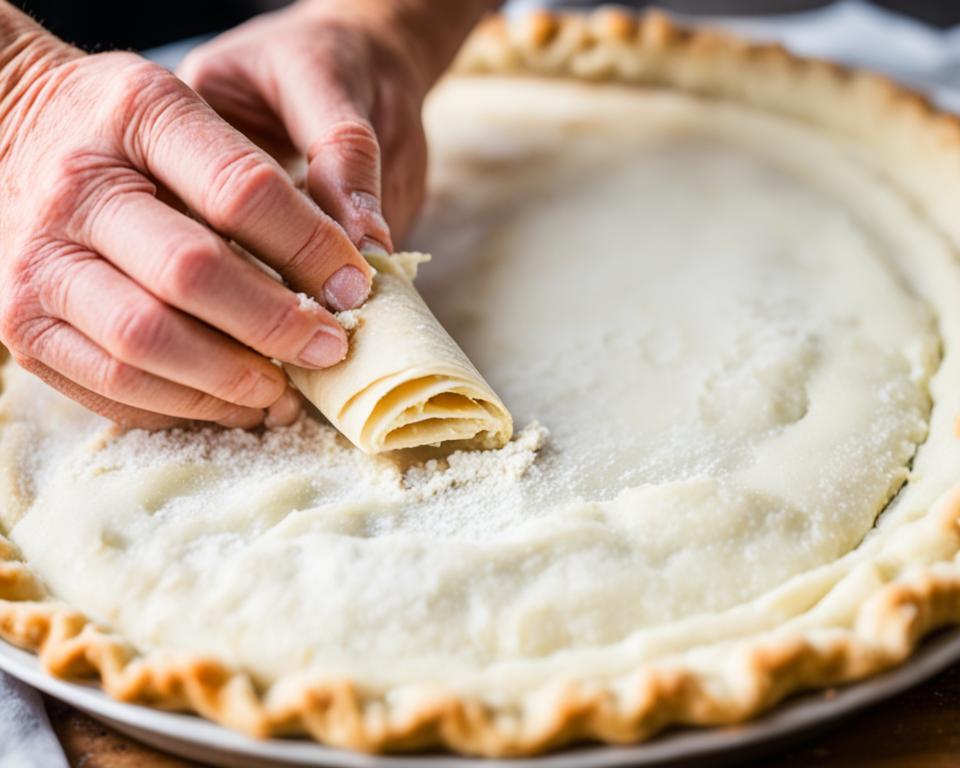
When the edges are secured and the design set, the pasty is primed for the oven. What emerges is a testament to careful preparation, a savory pie with a golden, flaky crust, ready to be savored. The key to achieving this lies not just within the ingredients or the oven’s heat, but in the preparation – the rolling, shaping, and crimping that elevate homemade pastry to a delightful experience.
Baking Your Flaky Meat Pasty to Perfection
The moment of truth in creating your delicious hand pie comes when it’s time to bake. Transforming the assembled raw ingredients into that iconic flaky crust and luscious meat-filled pastry is a matter of precise heat and timing. Let’s walk through the essential steps to ensure your savory pie reaches peak perfection in the oven.
Achieving a Golden Crust
One of the hallmarks of a perfectly baked savory pie is the golden brown color of its crust, signifying a texture that is both flaky and tender. Preheat your oven to 400°F (204°C) and place your pasties on a well-floured baking sheet. Just before they go into the oven, brush each pasty with a light, even coat of egg wash. This isn’t just for a glossy finish—it helps achieve that sought-after deep golden brown color as it bakes to crispy perfection.
How to Know When Your Pasty Is Perfectly Cooked
The bake time is essential, but it’s the visual cues and internal conditions that truly dictate when your pasty is perfectly cooked. Keep a vigilant eye on the oven; when you see the pasties puff up, with a crust that’s a golden brown, it’s a promising sign. To ensure the filling is piping hot and safe to eat, you may want to check that the internal temperature of the meat reaches 165°F (74°C). A thermometer comes in handy to guarantee the savory filling is thoroughly cooked. If the crust dapples with flakey layers and the center is steaming, your flaky meat pasty has achieved pastry glory and is ready to enchant the palates of all who taste it.
Customizing Your Pasty: Variations and Substitutions
Creating the perfect pasty caters to individual tastes and seasonal availability, offering the freedom to add a unique twist to the traditional savory pie. Exploring various vegetable additions can transform a classic meat pie into a delightful surprise, while opting for puff pastry presents a convenient pastry option without compromising the signature flaky texture.
Vegetable Variations for Seasonal Twists
Transforming the classic meat pie into a richer and more nuanced eating experience can be as simple as incorporating different vegetables into the savory filling. Hearty root vegetables like parsnips contribute an earthy sweetness, while the addition of peas offers bursts of freshness. Rutabagas, with their subtle sweetness and turnip-like flavor, can be a perfect complement to the savory richness of the traditional meat and potato mixture. Such variations not only provide intriguing new tastes but also add nutritional value and seasonal flair to the beloved vegetable pasties.
Alternative Pastries: Using Puff Pastry for Convenience
In modern iterations of the classic pasty, puff pastry is increasingly favored for its ease and the delightful, airy layers it introduces. The transformation is straightforward: a sheet of thawed, store-bought puff pastry envelops the savory filling, providing a time-saving and fuss-free approach to achieving a light and tender crust. Puff pastry’s versatility makes it one of the most convenient pastry options, suitable for both novice and experienced bakers, ensuring a deliciously flaky outcome that honors the savory pie tradition.
Regardless of your choice, the core idea remains the same—combining a flaky, buttery crust with a savory, hearty filling. These variations on the traditional recipe provide a delicious avenue for expression and experimentation within the world of savory pies. Whether you prefer a homemade buttermilk crust brimming with seasonal veggies or the convenience of puff pastry, the end product is sure to be an irresistible homemade pasty that beckons with each golden, flaky layer.
| Ingredient | Classic Pasty | Seasonal Variation |
|---|---|---|
| Vegetable | Potatoes | Parsnips, Peas, Rutabagas |
| Pastry Type | Buttermilk Pie Crust | Puff Pastry |
| Taste Profile | Rich, Meaty | Flavorful, with a Seasonal Twist |
| Preparation | From Scratch | Convenient & Time-saving |
Tips for Making Pasties Ahead of Time
Embracing the convenience of make-ahead meals, especially when it comes to favorites like the flaky meat pasty or other homemade pastries, can be a game-changer in your culinary routine. Not only does it save time, but it also ensures that you have a delicious meal ready to go when you need it. Let’s look at the best practices for preparing pasties ahead of time, touching on refrigeration, freezing, and the proper way to reheat them to maintain that delightful flakiness and savory goodness.
Refrigerating and Freezing for Later Enjoyment
To relish the taste of homemade pastries at your convenience, consider the refrigerator or freezer your allies. For fresh-baked pasties, let them cool down completely before placing them in an airtight container or a tightly sealed freezer bag. On the other hand, for unbaked pasties, wrap each individually in plastic wrap and then place them into your freezing unit. Freezing pasties is a superior way to extend their shelf life without sacrificing the quality of these delicious hand pies.
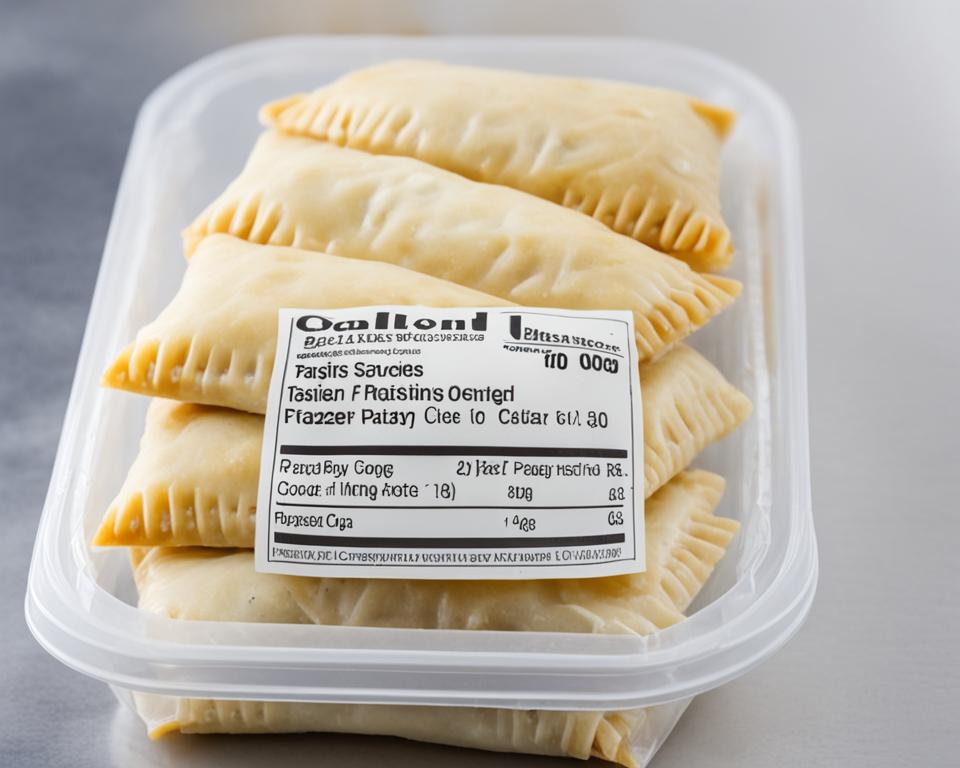
Reheating Pasties Without Losing Flakiness
When it’s time to indulge in your pasty, the method you use for reheating can make all the difference in texture and taste. To preserve the flakiness of the crust and ensure a hot, savory filling, it’s recommended to reheat frozen pasties in the oven. Doing so recreates the fresh-baked experience, reviving the crust to its golden peak. The microwave, while tempting for its speed, can introduce moisture that compromises the pastry’s crispness, so it’s best reserved for other reheating tasks. Following these tips will have you enjoying a delicious hand pie that tastes just as good as the moment it came out of the oven.
An Overview of Regional Pasty Variations
Delving into the world of pasties, we find a rich tapestry of regional variations that span from the cliffs of Cornwall to the melting pot of the United States. This journey through savory pastry history reveals how the Traditional Cornish Pasty has been adapted and embraced by different cultures, leading to a delightful array of flavors that resonate with local taste buds. We will explore how these adaptations have managed to retain the enduring appeal of the original pasty while adding a unique twist that speaks to the diverse palate of American cuisine.
The Traditional Cornish Pasty
Cherished as a genuine classic, the Traditional Cornish Pasty is the quintessential savory pie. It stands as a testament to Cornish heritage, packed with beef, onion, potato, and swede, all neatly encased in a thick crust. It bears the hallmark of simplicity and nourishment, concealing a savory filling that warms the soul. Historically consumed by miners for sustenance, the traditional pasty is a formidable part of Cornwall’s culinary identity, a treasure that has been safeguarded and celebrated over generations.
American Influences on the Classic Meat Pie
The American landscape has been fertile ground for the evolution of the classic meat pie. Here, the traditional pasty has found new dynamism, adapting to a bountiful variety of regional ingredients and tastes. The American meat pie often sees its ingredients pre-cooked, a distinction from the raw fillings of its Cornish cousin. This not only contributes to the richness of the savory pie but also echoes the American tradition of innovation and diversity in food. These variations have created a unique culinary narrative that mirrors the rich tapestry of America’s cultural influences while honoring the traditional pasty’s legacy.
Whether it’s a Traditional Cornish Pasty enjoyed on a brisk day by the English sea or an American meat pie served at a bustling state fair, the pasty remains a beloved dish. Its ability to provide comfort, satiety, and nostalgia is testament to its timeless appeal. In each variation, we find a celebration of regional tastes within the familiar embrace of a flaky, savory pie—a dish that truly embodies both tradition and transformation.
Nutrition and Storage: Keeping Your Pasties Fresh
Understanding the nutritional profile of homemade pastries and proper storing techniques can help ensure your savory pies retain their freshness and taste. A meat-filled pastry, be it a classic Cornish or an experimental rendition, brings richness in flavor and nutrition to any meal setting. It’s the harmony of well-selected ingredients and precise storage methods that maintains the integrity of your culinary creations.
Understanding the Nutritional Components of Pasties
The quintessential homemade pastry, bursting with savory fillings, is a treasure trove of nutrients. The balance each pasty strikes between proteins, carbs, and fats largely depends on the type of meat, the variety of vegetables included, and the pastry itself. This delightful savory pie can be a substantial addition to your diet when crafted with wholesome, high-quality ingredients, perfectly baked into a flaky crust.
Best Practices for Storing Homemade Pasties
To keep those delicious homemade pastries tasting as if they’ve just come out of the oven, storing pasties correctly is key. Proper cooling is crucial prior to storage to sidestep any moisture accumulation. Once cooled, wrapping the pasty securely and refrigerating or freezing in an appropriate container is essential for preserving flavor and freshness. This allows you to savor these savory pies at a later date, without compromising on quality or taste.
Whether you plan to enjoy your savory pie immediately or save it for a busy weeknight dinner, here’s a table showcasing the best storage methods and timelines for your homemade pastries:
| Storage Method | Temperature | Shelf Life | Tips |
|---|---|---|---|
| Refrigeration | Below 40°F | 3-5 days | Place pasties in an airtight container to prevent drying out |
| Freezing | 0°F or colder | Up to 3 months | Wrap each pasty individually in plastic wrap, then store in a freezer-safe bag |
| Room Temperature (cool, dry area) | Around 68°F | 1-2 days | Keep pasties covered with a clean cloth to protect from flies or dust |
Adhering to these storage suggestions ensures that the tastes and textures of your savory pies, from the flaky crust of meat-filled pastries to the rich gravy within, are just as delightful upon reheating.
Pairing Your Meat Pasty with Sides and Sauces
As delightful as a meat-filled pastry can be on its own, the act of complementing a savory pie with thoughtful side dishes can elevate the dining experience to new heights. The rich flavors of the meat pasty find balance in the company of lighter accompaniments, creating a meal that not only satisfies but also excites the palate. From garden-fresh salads to root vegetable roasts, the options are plentiful and promise to accentuate the joy of each bite with added textures and tastes.
Ideas for Complementary Side Dishes
Consider the addition of a crisp garden salad dressed in a zesty vinaigrette to introduce a fresh, bright element to counterbalance the pasty’s richness. Roasted vegetables, tinged with caramelization, offer a sweet and earthy counterpoint that perfectly complements the savory tones of the meat pastry. For colder days, a bowl of warm soup can act as a comforting companion, providing both warmth and a pleasing contrast in texture. These side dishes harmonize with the savory pie, ensuring a fully rounded and satisfying meal experience.
Delicious Sauces to Enhance Your Pasty Experience
No savory pie is truly complete without a drizzle of sauce or gravy that melds all flavors together. A rich gravy derived from the filling’s own juices can deepen the savory profile of the pasty, accentuating its meaty character. Tomato paste offers a tangy twist, while a touch of spicy sauce enlivens each mouthful with a pleasant heat. The right sauce, chosen to marry well with the particular spices and flavors of your meat pasty, turns every bite into an irresistible treat and keeps you reaching for more.
FAQ
What is a Flaky Meat Pasty?
A Flaky Meat Pasty is a type of savory pie featuring a homemade pastry filled with a mix of meat and vegetables. It’s sealed to create a delicious hand pie with a flaky crust and is often enhanced with a quick homemade gravy.
Can I make a meat pasty with a ready-made pie crust?
Yes, you can use a ready-made pie crust if you’re short on time. However, a homemade buttermilk pie crust is recommended for the most authentic and flaky texture.
Where do meat pasties originate from?
Meat pasties have their roots in Cornwall, England, where they have been a traditional food staple since the 1100s. They have since become popular in various regions worldwide, including upstate Michigan, USA.
How do I ensure my pasty crust is flaky?
For a flaky crust, use cold butter and buttermilk when making the dough. Also, handle the dough as little as possible and keep it chilled until it’s time to bake.
What kind of meat should I use for the filling?
Traditionally, beef chuck is used because it’s flavorful and tenderizes well during the cooking process. You can balance the meat with vegetables like carrots and potatoes for a rich and savory filling.
How thick should I roll out the pastry for my pasties?
Roll out the pastry to about a 1/4 inch thickness. This ensures the dough is sturdy enough to hold the filling but thin enough to cook to a flaky finish.
How do I crimp the edges of a pasty?
After placing the filling on the rolled-out dough, fold the dough over the filling and press the edges together. Use a fork or your fingers to crimp the edges, sealing the pasty.
At what temperature should I bake my meat pasties?
Preheat your oven to 400°F (204°C) and bake until the crust is golden brown. This typically takes about 25-30 minutes, depending on the size of the pasties.
Can I use other vegetables besides carrots and potatoes in my pasties?
Yes, feel free to experiment with a variety of vegetables such as parsnips, peas, or rutabagas. This will provide different flavors and nutrition to your pasty.
Is puff pastry a good substitute for the traditional crust in meat pasties?
Puff pastry can be a convenient alternative for those who prefer not to make the crust from scratch, offering a lighter, flaky texture.
Can I prepare meat pasties in advance and freeze them?
Absolutely, you can freeze both unbaked and baked pasties. For unbaked pasties, wrap them individually in plastic wrap. Baked pasties should be cooled completely before storage.
What’s the best way to reheat a meat pasty?
Reheat frozen or refrigerated pasties in the oven to maintain their flakiness. Avoid using a microwave as it can make the crust soggy.
What distinguishes the Traditional Cornish Pasty?
The Traditional Cornish Pasty is known for its specific filling of beef, onion, potato, and swede (rutabaga), wrapped in a sturdy crust designed to retain heat and withstand a miner’s workday.
How do American meat pies differ from the traditional pasty?
American adaptations often involve pre-cooking the ingredients before assembling the pie, reflecting the country’s diverse culinary influences and creating a more seasoned and savory experience.
What are the nutritional components of a meat pasty?
Pasties typically contain protein from the meat, carbohydrates from the vegetables and pastry, and fats from the butter or other fats in the crust. They can be a balanced meal when prepared with wholesome ingredients.
How should I store homemade pasties to keep them fresh?
Allow cooked pasties to cool completely, then wrap them tightly and store in the refrigerator or freezer. This preserves their flavors and freshness for later consumption.
What side dishes complement a meat pasty well?
A fresh garden salad, roasted vegetables, or a bowl of warm soup can complement the richness of a meat pasty nicely.
Which sauces best enhance the flavors of a meat pasty?
Gravy made from the pasty’s cooking juices, tomato paste, or a favorite spicy condiment can all enhance the savory flavors of a meat pasty and add moisture to each bite.

